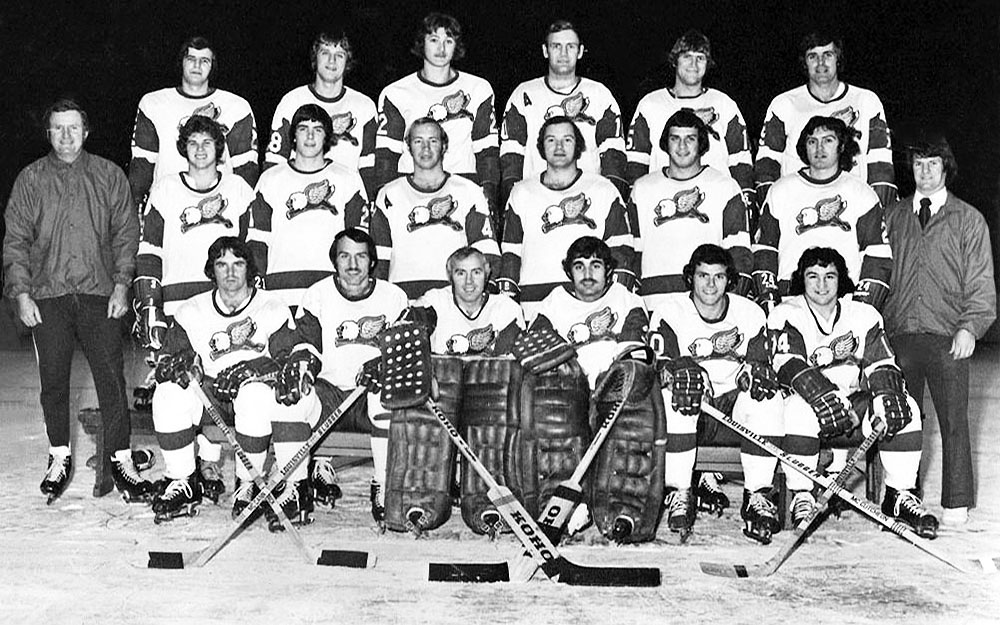
and the hockey league that never was

|
24 September 2025 London Lions The hockey league that never was (part 1) |

London Lions, November 1973.
Back row l to r: Ray Bibeau, Nelson Pyatt, Mike Korney, Ulf Sterner, Brian Watts, Terry Clancy.
Middle row l to r: Doug Barkley (coach), Murray Wing, Dennis Johnson, Ron Simpson, Charlie Shaw,
Earl Anderson, Rick Newell, Al Coates (trainer)
Front row l to r: Duffy McCarthy, Rick McCann, Leif Holmqvist, Tim McQuiston, Brian McCutcheon, Dennis Polonich For many years, Canada was the dominating force in the world of
ice hockey. The professional players in the six teams in the National Hockey League were - literally - in a league of their
own. The reigning Allan Cup champions, i.e. the best Canadian amateur team, usually represented
the country in the World Championships and usually they won but the last time that happened was
in 1961 when the Trail Smoke Eaters became World Champions. Things were changing fast in the 60s.
European nations like Czechoslovakia, Finland, Sweden and the Soviet Union
took big steps every
year and soon a selection of the best amateur players in Canada had a hard time against them.
Canada wanted to use professional players but at the time that wasn't allowed neither in the
Olympics nor in the World Championships. Canada perceived the situation to be a double standard
since players on some of the European national teams were believed to be state-sponsored
professionals labeled as amateurs. In 1970, this led to Canada withdrawing from international
competitions until they were allowed to use their best players.
Canada was still considered to play the best hockey in the World, at least until the Summit
Series in September 1972 when a selection of Canadian professionals from the NHL played against
the Soviet national team. Canada won four of the games, the Soviets won three while one was tied.
Things had indeed changed. There were changes within the professional hockey as well. From 1967
to 1972, the NHL had expanded from 6 to 14 teams. In 1972 a rival league, the World Hockey
Association, was launched with 12 additional teams. The NHL lost 67 players to the new league
and salaries rose. It was natural to turn the eyes to Europe. The WHA did. There was a reason
that they were named the World Hockey Association. The NHL were beginning to lose the monopoly
they've had and that's when Bruce A. Norris, owner of the Detroit Red Wings, in September 1972
presented the idea of a European professional league which led to the creation of a team named
the London Lions...
|